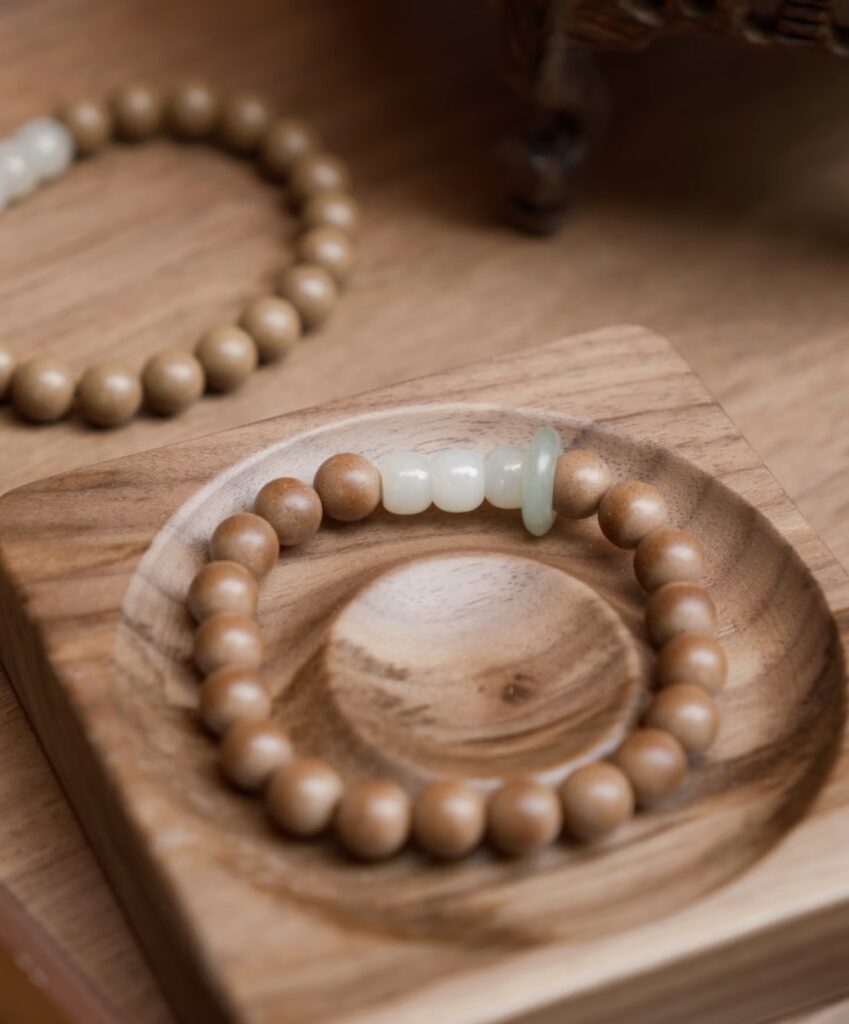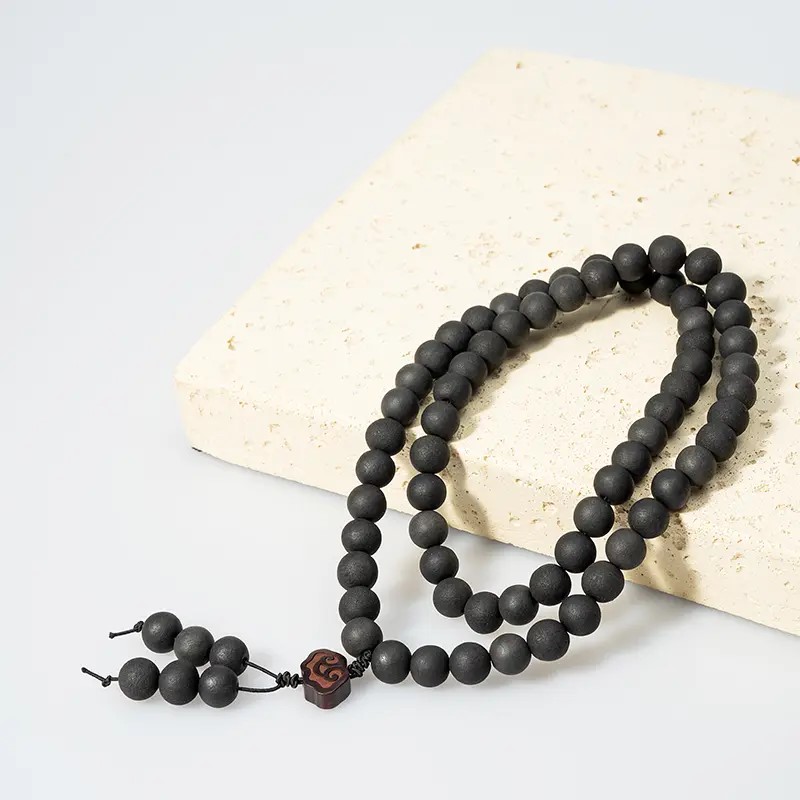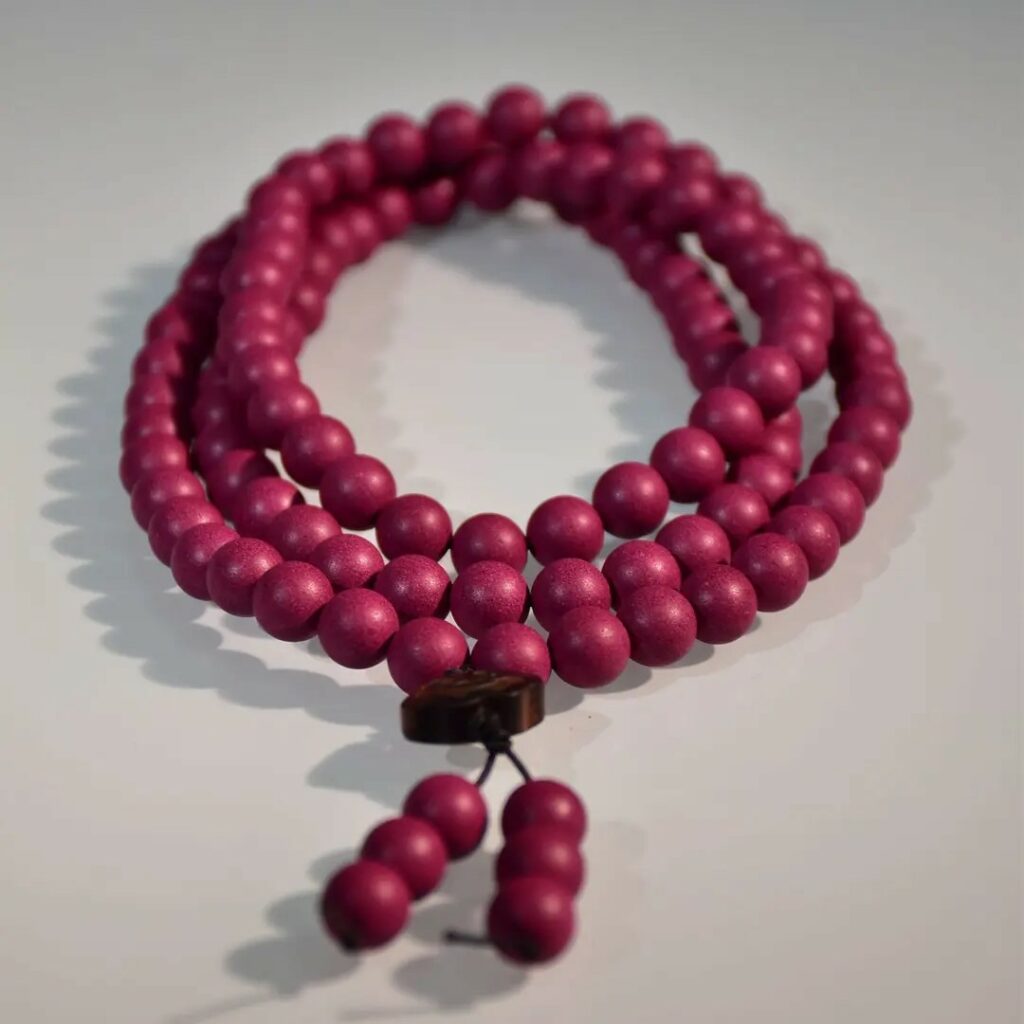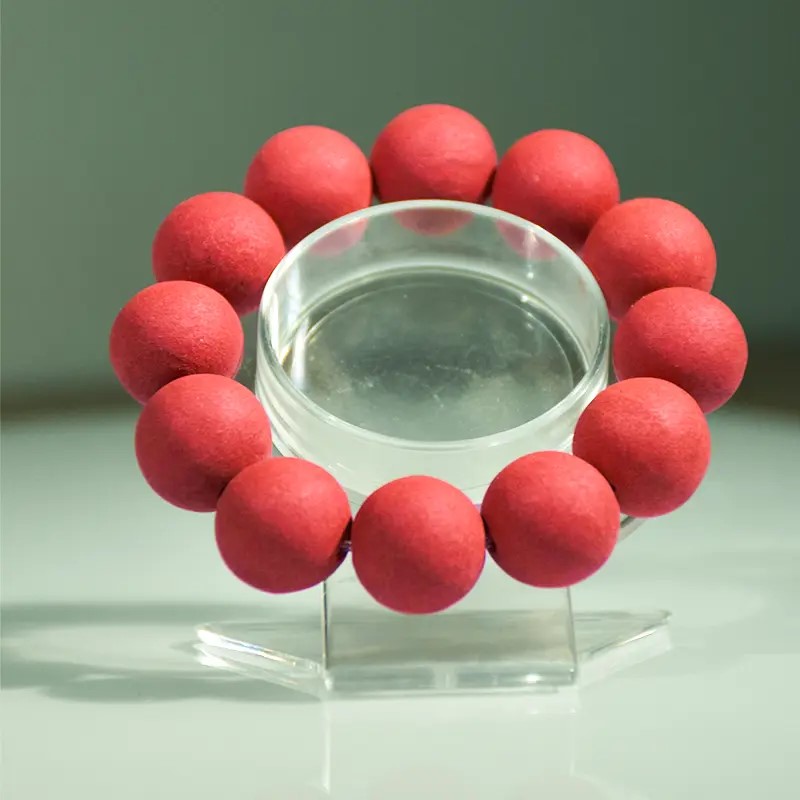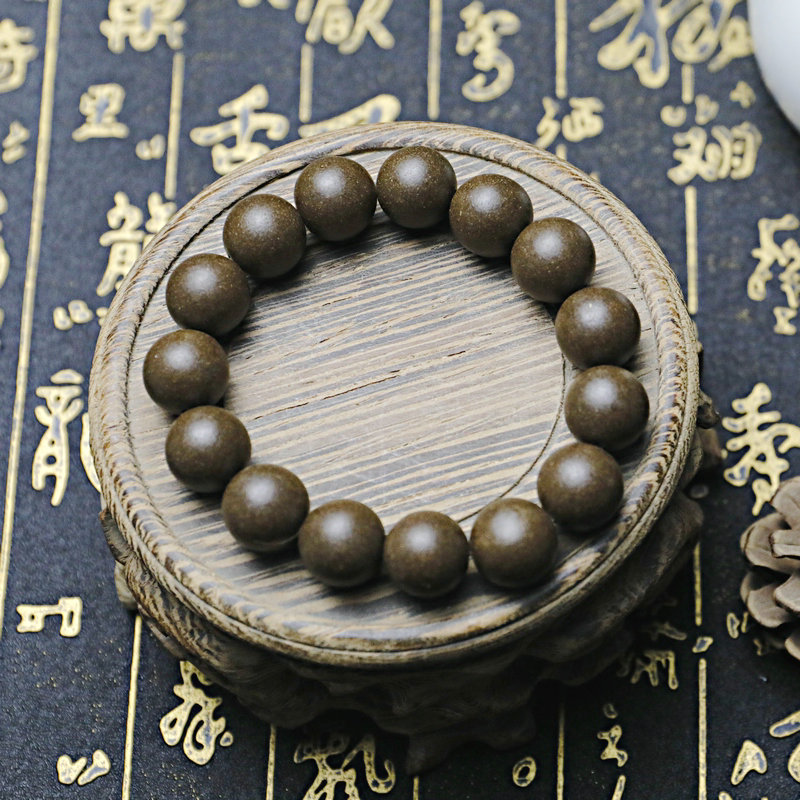Traditional Chinese Compound Incense
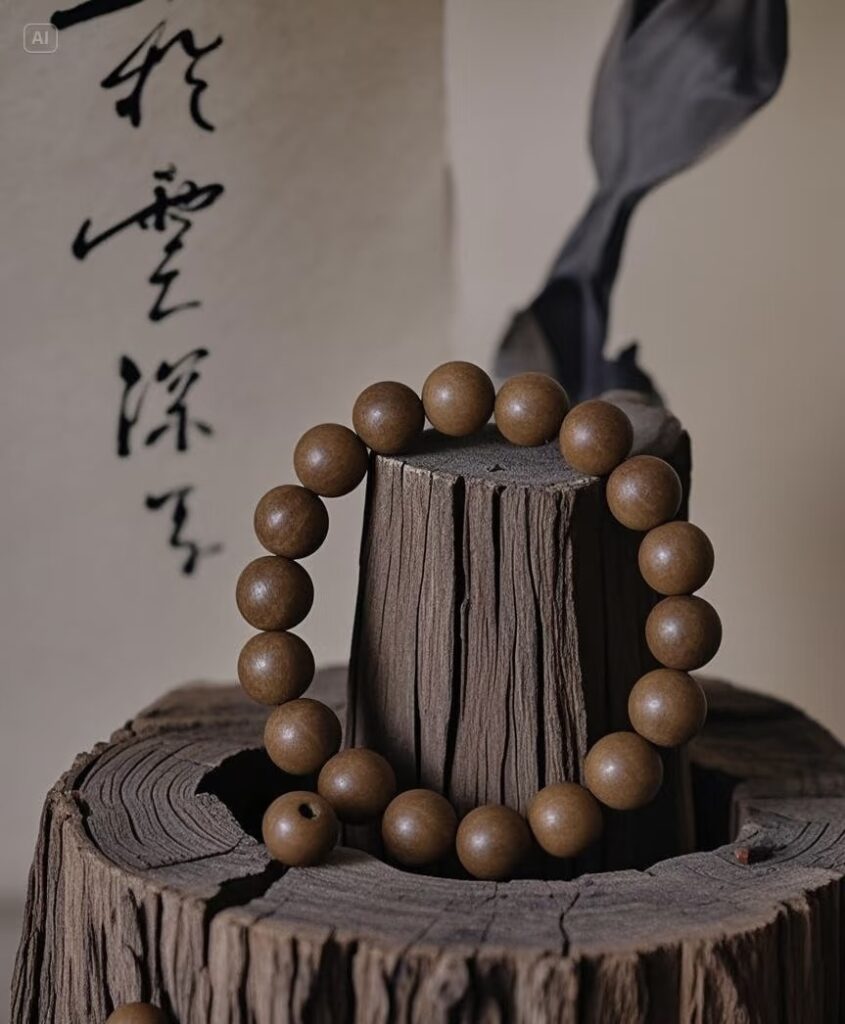
Traditional Chinese Compound Incense
The Delicate Art of Chinese aroma incense
Incense beads, or Chinese aroma incense beads , are far more than simple ornaments. These meticulously crafted spheres, born from the fusion of powdered precious woods, resins, herbs, and binding agents, represent a unique intersection of ancient Chinese fragrance culture, artistry, and contemplative practice. beads
Traditional Chinese Compound Incense, the revered art of crafting beads from precious aromatic woods and medicinal powders, embodies a unique convergence of olfactory pleasure, cultural heritage, and tactile artistry. For the discerning collector or practitioner, the initial handling phase often presents a curious phenomenon: a fine powder dusting off the bead’s surface. While momentarily disconcerting, this is not merely normal but a hallmark of authenticity and a precursor to the bead’s remarkable transformation. This article delves into the material science, craftsmanship, and transformative process behind this initial shedding, contrasting it with the deficiencies of counterfeit beads.
I. The Inherent Nature of the Material: A Granular Foundation
The very essence of Traditional Chinese Compound Incense dictates its initial behavior:
- Powdered Constituents: Authentic Traditional Chinese Compound Incense is meticulously crafted from finely ground precious woods (Agarwood, Sandalwood, Dalbergia), resins (Frankincense, Myrrh), spices (Clove, Cinnamon), and traditional medicinal herbs. These materials, chosen for their aromatic profiles, therapeutic properties, and energetic qualities, are inherently granular at the microscopic level.
- The Binding Matrix: To cohere these powders into a solid bead, natural binders are essential. Traditional recipes often utilize:
- Natural Plant Gums/Gluers: Such as tragacanth gum or acacia gum.
- Honey: Acts as a humectant and mild binder.
- Fruit Pulps/Extracts: Providing sugars and pectin.
- Minimal Synthetic Binders (in some modern blends): Used sparingly to ensure the primary experience remains the natural aromatics. Crucially, these binders do not completely encapsulate or dissolve every single particle of the powdered ingredients; they create a cohesive matrix around them.
- Surface Texture: As noted, authentic Traditional Chinese Compound Incense possesses a distinct “wooden particle texture” or graininess. This tactile signature arises directly from the exposed tips of the powdered wood and herb particles at the very surface of the bead. They are held firmly enough to maintain the bead’s integrity but are not fused into a completely smooth, plastic-like surface.
II. The Genesis of Initial Shedding: Friction, Release, and Surface Refinement
The initial powder loss during handling (“pan wan” or “playing”) is a direct consequence of the material composition and surface structure:
- Loose Surface Particles: During the forming, drying, and potential light sanding/finishing process, the very outermost layer of particles may have only minimal binder adhesion or may protrude significantly. These are the most vulnerable.
- Tribological Action (The Science of Friction): When the bead is first handled, rolled, or rubbed:
- Direct Abrasion: Fingertips, cloth, or contact with other beads physically abrade these minimally bound or protruding particles.
- Micro-Fractures: Gentle pressure and friction can cause microscopic fractures at the weak points connecting these surface particles to the main matrix, releasing them.
- Binder Dust: Minute particles of the dried binder itself can also be dislodged in this initial phase.
- A Natural “Cleaning” Process: This shedding effectively removes the most fragile, superficial layer. It’s akin to a natural polishing or refinement stage, gradually exposing a slightly denser, more integrated surface layer beneath. It removes the “fluff” or “over-spray” of the manufacturing process.
- Temporary and Self-Limiting: This phenomenon is typically most noticeable in the first few hours or days of handling. As the loose particles are shed, the underlying, better-integrated surface is revealed, and shedding diminishes rapidly.
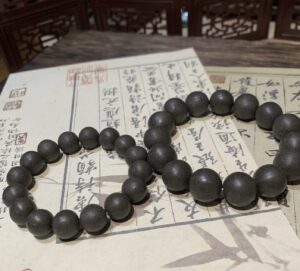
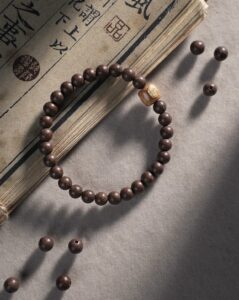
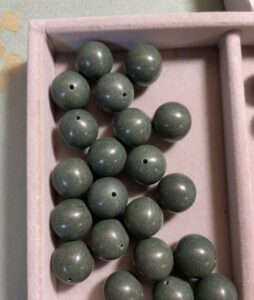
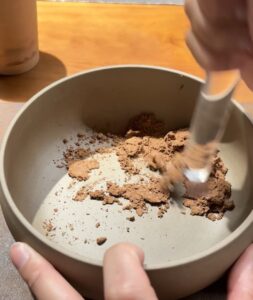
III. The Crucible of Transformation: From Grain to Glaze
The true magic of authentic Traditional Chinese Compound Incense lies in what happens after this initial shedding. The shedding isn’t the end goal; it’s the prelude to a remarkable metamorphosis driven by the interaction between the bead and its handler:
- The Role of Skin Contact: Human skin naturally secretes oils and mild acids.
- Plasticization and Penetration: These skin oils and warmth gently:
- Soften the Natural Binders: The oils partially plasticize the natural resins and gums near the surface, making them slightly more malleable.
- Penetrate the Micro-Pores: Oils seep into the microscopic pores and spaces between the powdered particles.
- Particle Compression and Alignment: Continued gentle friction and pressure during handling:
- Compress Surface Particles: Push the surface particles closer together.
- Encourage Filler: Helps the softened binder flow slightly into remaining micro-gaps.
- Oxidation and Polymerization: Exposure to air and the catalytic effect of skin oils/warmth promotes:
- Oxidation of Oils: Forms a thin, hard layer.
- Cross-linking of Binders: Natural resins can undergo subtle polymerization, strengthening the surface matrix.
- Formation of the Patina (“Bao Jiang” / Glaze): The cumulative effect of oil penetration, compression, particle realignment, binder softening/re-hardening, and oxidation is the gradual development of a smooth, hard, luminous patina. This is the coveted “ceramic feel” or “jade-like luster”. The surface transitions from a rough, light-scattering (matte) state to a smooth, light-reflecting (glossy) state. The inherent “wooden particle texture” becomes less tactilely prominent but remains visually discernible beneath the deepening sheen, a testament to its natural origins.
IV. The Telltale Signs of Counterfeit: Why Fakes Fail to Transform
The inability to develop this authentic glaze is the primary failing of counterfeit Traditional Chinese Compound Incense, directly linked to their composition and the absence of meaningful initial shedding:
- Excessive Fillers and Inert Binders: Counterfeits rely heavily on cheap, inert fillers (sawdust, clay, plaster) and strong synthetic binders (industrial glues, epoxy resins, PVC).
- The “Plastic Trap”:
- Surface Sealing: Synthetic binders often form an impermeable, plastic-like shell around the filler particles, completely sealing the surface. There are no loose particles to shed because everything is locked in plastic.
- No Oil Penetration: This plastic layer prevents skin oils from penetrating the bead’s core. Oils simply sit on the surface or wipe off.
- No Binder Plasticization: Synthetic binders are generally resistant to the mild plasticizing effect of skin oils.
- The Resultant Deficiencies:
- Persistent “Wooden” Feel (Often Artificial): They may retain a rough, sawdust-like texture (the filler) but lack the nuanced graininess of precious woods. It feels cheap and artificial.
- Complete Lack of “Ceramic Feel” or “Jade Luster”: Without oil penetration, compression, and the natural chemical processes described above, no genuine patina develops. The surface remains stubbornly matte, chalky, or has a superficial, unnatural plastic shine that doesn’t deepen or warm.
- Minimal or No Initial Shedding: The sealed surface means little to no powder comes off initially. Alternatively, if poor-quality filler is loosely bound, excessive and continuous shedding might occur, indicating structural weakness, not the beneficial refinement of authentic beads.
- Inferior Aroma: Authentic aromas are muted or replaced by chemical smells from the binders/fillers. The complex scent evolution seen in real Traditional Chinese Compound Incense is absent.
V. Managing Initial Shedding and Nurturing the Glaze
Understanding the process informs proper care:
- Embrace the Initial Phase: Recognize light powdering as a normal, positive sign of natural materials.
- Gentle Handling: Start with clean hands and soft, dry cloth (like undyed cotton or silk). Gentle rolling is sufficient; avoid aggressive rubbing.
- Patience is Paramount: The development of the jade-like glaze takes weeks, months, or even years of consistent, mindful handling. Rushing with oils or waxes can clog pores and prevent the authentic patina from forming.
- Hygiene: Wipe beads occasionally with a slightly damp cloth if heavily soiled, then dry thoroughly. Avoid immersion in water.
- Storage: Keep in a cool, dry place, ideally in a breathable silk or cotton pouch when not being handled.
Shedding as a Signature of Authenticity and Potential
The initial shedding of powder from genuine Traditional Chinese Compound Incense is not a flaw, but a fingerprint of its authentic composition – precious, granular materials held within a natural matrix. It is the necessary first step in a profound alchemy where human interaction, through the gentle transfer of oils and warmth combined with friction, catalyzes a physical and aesthetic metamorphosis. This process compresses the surface, integrates the oils, and initiates oxidation, transforming the granular foundation into the hard, luminous, jade-like glaze that is the hallmark of a true, well-loved Traditional Chinese Compound Incense. Counterfeit beads, imprisoned by their synthetic binders and inert fillers, lack this vital dynamism. They remain static – perhaps shedding nothing, or shedding endlessly without improvement – forever devoid of the living warmth and deepening beauty that authentic Traditional Chinese Compound Incense, through its initial vulnerability and subsequent transformation, so eloquently achieves. The shedding, therefore, is the bead’s first whisper of its true nature and its latent potential for radiant beauty.
